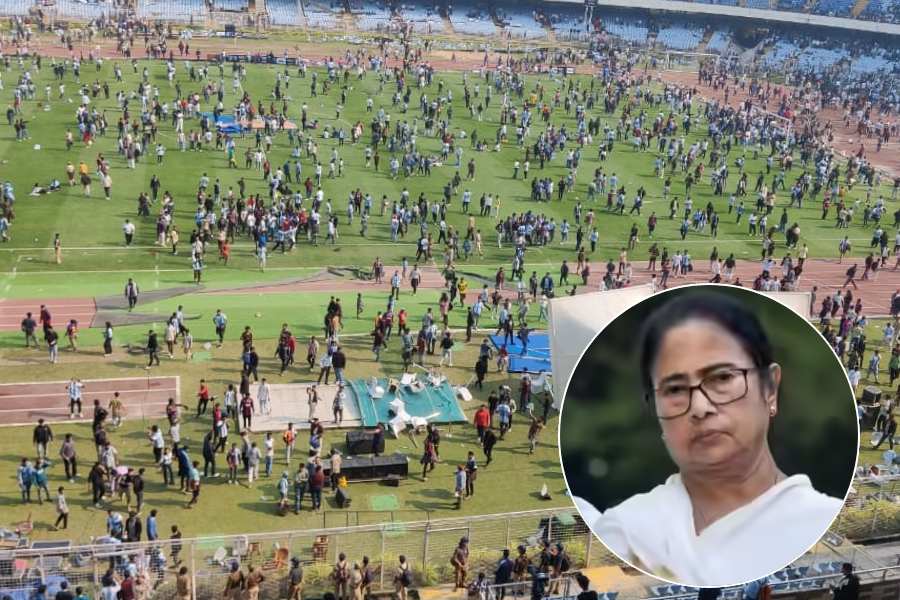|
|
| Tired of platitudes |
Some in Assam like to see the unilateral ceasefire by the so-called Alpha and Charlie companies of United Liberation Front of Asom’s 28th battalion as good news. However, there is nothing in the history of the past two decades of the state’s politics to suggest that the state’s multi-faceted political crisis, of which Ulfa is a symptom, might end with new defections from Ulfa or, even a mutiny.
A far more promising development may be the appointment of former chief minister of Rajasthan, Shiv Charan Mathur, as governor. For the first time in nearly two decades, Assam will have a politician as governor.
Two other gubernatorial appointments in the region are significant. Sikkim’s new governor, the retired IAS officer, Balmiki Prasad Singh, is an old ‘Northeast hand.’ Unlike these two men, the new governor of Meghalaya, Ranjit Shekhar Mooshahary, has had a career in a uniformed all-India security service. But his Bodo roots makes it an interesting appointment.
Governors of the northeastern states have more inputs in policymaking than in the less-troubled states. It is no coincidence that the primary thrust of our policy towards Ulfa during the tenure of the last two governors — both military men — has been military. The half-hearted steps toward negotiations were not the result of conviction on either side. They were gestures to satisfy Assamese public opinion that strongly favours a negotiated and honorable settlement with Ulfa.
The outgoing governor, Ajay Singh, leaves behind a remarkably unsuccessful record of locking horns with Ulfa for nearly two decades. In the early Nineties, long before he became the governor, he commandeered two counter-insurgency operations against Ulfa as head of the Indian Army’s 4 Corps. As governor, he came to be associated with a hardline position of opposing talks with Ulfa.
Singh claims in his resumé that as the commander of those counter-insurgency operations, he “was given the responsibility of wiping out [the] Ulfa insurgency” and that he “smashed the Ulfa insurgency in less than three months”. But that was more than fifteen years ago.
While Ulfa is at a crossroads today, it is not because of its military reversals alone. Popular outrage at the killings of civilians, and a sense of hopelessness that there is no end in sight to the cycle of violence and counter-violence, are more important factors.
There is no evidence that anyone knows how to use the shift in the public mood as a political opening. One hopes that the new gubernatorial appointments would mark a shift in the balance between military and political thinking. Even though Ulfa as an idea has always been more powerful than the reality, this has not made engaging with it any less challenging.
The oft-repeated clichés about unemployment and underdevelopment creating conditions for recruitment by insurgent groups, and platitudes about solving the crisis of immigration through border-fencing do not give confidence that our decision-makers understand the sources of Ulfa’s political influence.
The two most recent governors have both been highly vocal on the dangers of illegal immigration from Bangladesh. But to expect political dividends out of such speech-making on this extraordinarily difficult issue without addressing it in any substantial sense is to grossly misunderstand the nature of the immigration crisis and its relationship with the rise of Ulfa.
Ulfa was a radical fringe of the Assam Movement of 1979-85. From the very beginning, it tried to distance itself from some of the Assam Movement’s extreme rhetoric on “foreigners” and “Bangladeshis.” At the same time it tried to get propaganda value out of the evident indifference of our governmental institutions to this key Assamese concern.
But the immigration crisis, for Ulfa, has never been more than a piece of evidence of what it sees as a raw deal that the Assamese got in the postcolonial pan-Indian dispensation.
India’s political and bureaucratic elites inherit a memory of Partition vastly different from that of their counterparts in Assam. Few people seem to know that the migration from eastern Bengal was a politically explosive issue in Assam even as far back as the 1930s. Indeed, it shaped Assamese attitudes towards Partition.
The flow of people from one of the subcontinent’s most densely populated areas to a sparsely populated region — legally open to new settlements in colonial times — did not stop with Partition. The erection of an international border did not change that reality. Indeed, from the Assamese point of view, the effect of Partition was to intensify the migration pressure from eastern Bengal, with waves of Hindu refugees joining in.
In retrospect, Assam appears to have adapted to this demographic transformation rather well. Official predictions of the 1930s that immigration would permanently alter the future of Assam and destroy “the whole structure of Assamese culture and civilization” did not materialize. But it is not because the predicted demographic changes did not take place: they did, with profound consequences. But contrary to the fears of the colonial era, most East Bengali migrant Muslims adopted Assamese as their mother tongue. No one familiar with the relationship between demographic dynamics and civil disorder in other parts of the world would read this as a sign that everyone would live happily ever after.
Japanese scholar Hiroshi Sato talks about the faultline between the normative definition of citizenship in Indian law, and the actual exercise of franchise by people “based on the legitimacy of rudimentary documents rather than on the registration of citizenship.” The “foreigners” question in Assam is the product of this faultline. Understood in this way, it is not surprising that the issue became the epicentre of a veritable political explosion in Assam in 1979. There is no evidence that the ripples of this explosion have subsided.
The power of Ulfa as an idea reflects a policy impasse of subcontinental proportions, showing up the failures of Partition borders and of the foundational ideologies of the post-Partition states. Assam’s numerous tribal rebellions, and evidence of candidates of mainstream political parties turning to Ulfa’s tacit support during elections, and of even the government relying on such support in certain situations — relations facilitated by the massive corruption that the state has become known for — outline the multi-faceted nature of the crisis. If political movements relate to reality, either to the bare facts, or to strivings that grow out of a reality, Ulfa provides an example of the latter.
In Ulfa’s narrative of history, Assam lost its sovereignty in 1826. It sees itself as being engaged in a battle to recover that sovereignty. This reading of history has its elements of myth and fantasy. But as the veteran journalist, M.S. Prabhakara, points out, “a certain wistfulness and nostalgia over a past when Assam was a sovereign and independent political entity,” have been part of Assamese “folk memories, literature and cultural and political polemics,” for a long time.
To the military mindset, Ulfa’s insistence on discussing sovereignty might seem audacious, especially given the organization’s weak position. At the same time, it is hard to imagine how the strivings that animate Ulfa can be accommodated within the model of an ethnic peace accord — so popular among our politicians and bureaucrats.
The chief minister of Assam, Tarun Gogoi, has held out the Bodo Liberation Tigers as an example. The BLT, he says, is similar to Ulfa, but “we sat down with BLT and they surrendered.... Now we have BLT members as part of our government.”
But historically, the ‘Assamese’ has not been purely an ethnic and exclusive category. If the category includes minorities of all stripes — as it does in Ulfa’s vision — how can the aspirations of a territorially defined political community be accommodated within the model of an ethnic peace accord?
The reason for Ulfa’s apparent intransigence on the sovereignty question may be because the concept provides a way of getting around this difficulty. It brings to the policy agenda the notion of renegotiating the social contract between India and Assam.
Sovereignty talk does not have to take the form of the familiar talk about independence. However, compromises within this paradigm are possible only if constitutional reforms are part of the agenda. It might also require a willingness to relate foreign policy issues, vis-à-vis relations with Bangladesh, to domestic policy concerns, but in ways other than those that our security establishment has long preferred.
A bold new political initiative to resolve Assam’s complex crisis must consider such options.











